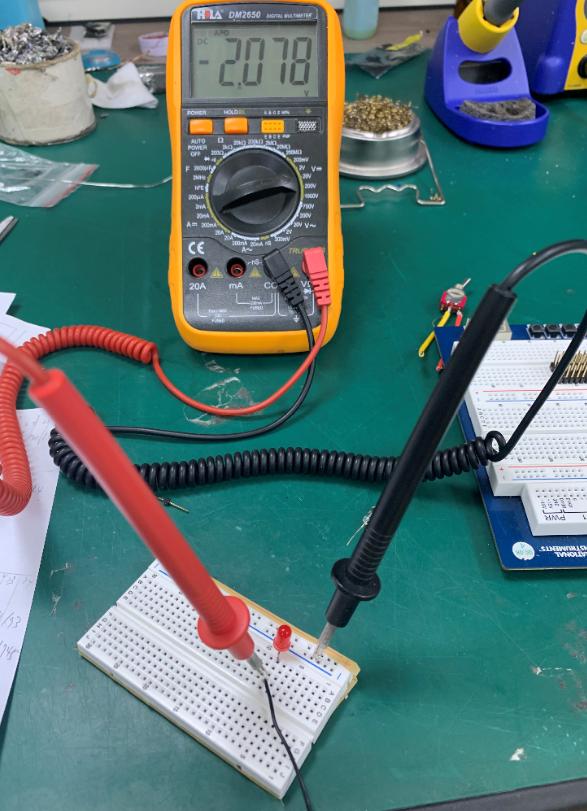I am encountering a strange problem when I measure the voltage across an LED. Please see below picture:
As you can see, I only connected 1 wire ("-") of adapter and used a multimeter to measure the voltage drop across the LED and I found there is ~-2V on the LED! There is no loop in this circuit, so it should have no volts drop across the LED. I have used other multimeters, but I still measure that negative voltage so it's not a multimeter problem.
I'm really sure it's an LED problem, but I have never seen this behavior before. I'm also not familiar with the manufacturing of LEDs, so I don't know what's happening on this LED.
This LED correctly lights with a forward voltage and does not light with reverse voltage. However, the important issue is when I use this LED as a test fixture, it causes the reference voltage (GND) to shift so the output voltage is different.
My question is: Have you seen this behavior on an LED? What is the possible problem on this simple LED?

